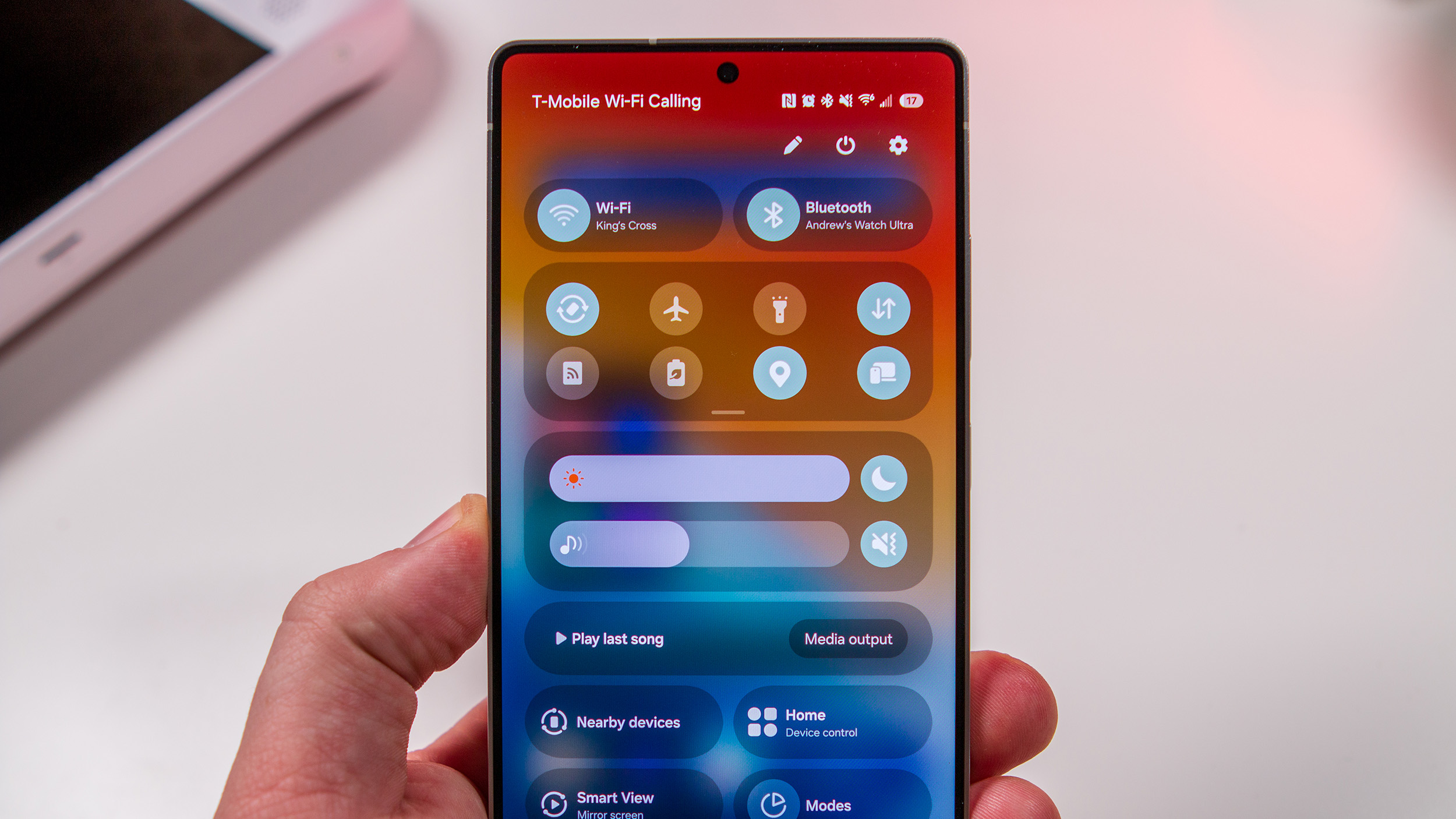Samsung Galaxy Watch 4 vs. Galaxy Watch Active 2: Should you upgrade?

Samsung Galaxy Watch 4

If you simply cannot help but get your hands on the latest and greatest tech, you'll be glad to know the Samsung Galaxy Watch 4 is one of the best options right now. The sleek design carries over some familiar elements, including the capacitive rotating bezel. You also get a BioActive sensor, improved health/fitness tracking, and Wear OS 3.
Samsung Galaxy Watch 4
Expand your horizons
Samsung Galaxy Watch Active 2

It's been around for a while now, but the Galaxy Watch Active 2 is still one of the best Android smartwatches you can buy for many reasons. It may not have the successor's new BioActive sensor, but you still get heart-rate monitoring, ECG, blood oxygen tracking, and more. You'll also be able to opt for LTE connectivity if you see fit.
Samsung Galaxy Watch Active 2
Effortless classic
Samsung Galaxy Watch 4 vs. Galaxy Watch Active 2: A different kind of upgrade
You may not realize it from the name, but the new Samsung Galaxy Watch 4 is the successor to the beloved Galaxy Watch Active 2. While it may not have "Active" in the name anymore, this Android smartwatch is still very much focused on tracking all aspects of your health and fitness.
Not to mention that it's Samsung's first-ever One UI watch powered by the new Wear OS 3. So there's a lot to unpack when deciding whether you should upgrade to the Samsung Galaxy Watch 4 from the Galaxy Watch Active 2. Obviously, if you want to experience a Galaxy Watch powered by Wear OS, this is your chance. You'll experience smooth performance and improved health tracking as well. For some users, the answer is obvious. Others may require a bit more convincing.
Embrace change with the Samsung Galaxy Watch 4

Performing a side-by-side comparison of the Samsung Galaxy Watch 4 and the Galaxy Watch Active 2 will show a few differences in the physical design, but also a lot of similarities. Both watches are available in 40mm and 44mm cases and have a capacitive rotating bezel around the edge of the display.
Unlike the previous models, the Galaxy Watch 4 is only available in an aluminum case. If you find yourself drawn to a stainless steel model, you should consider the Galaxy Watch 4 Classic, which has a physical rotating bezel rather than a digital one. The case sizes are also slightly different, with the options being 42mm and 46mm. With that said, the Galaxy Watch 4 models are extremely lightweight, which is perfect for active individuals.
| Header Cell - Column 0 | Samsung Galaxy Watch 4 | Samsung Galaxy Watch Active 2 |
|---|---|---|
| Display | 1.2-inch or 1.4-inch Super AMOLED | 1.2-inch or 1.4-inch Super AMOLED |
| Dimensions | 40.4 x 39.3 x 9.8mm44.4 x 43.3 x 9.8mm | 40 x 40 x 10.9mm44 x 44 x 10.9mm |
| Weight | 25.9 - 30.3g | 26 - 30g |
| Connectivity | Bluetooth 5.0, Wi-Fi b/g/n, LTE (select models) | Bluetooth 5.0, Wi-Fi b/g/n, LTE (select models) |
| Water-resistance | 5ATM+ IP68 / MIL-STD-810G | 5ATM+ IP68 / MIL-STD-810G |
| Battery life | 40 hours (varies by model) | 2 days (varies by model) |
| Sensors | BioActive sensor (HRM), electrocardiogram (ECG), accelerometer, gyroscope, geomagnetic, barometer, ambient light sensor | HRM, electrocardiogram (ECG), accelerometer, gyroscope, barometer, ambient light sensor |
| Colors | Aluminum: black, silver, Pink Gold, green | Aluminum: Aqua Black, Cloud Silver, Pink GoldStainless steel: black, gold silver |
| Operating system | Wear OS 3 | Tizen OS |
| Built-in GPS | ✔️ | ✔️ |
| NFC Payments | ✔️ | ✔️ |
| BIA | ✔️ | ❌ |
| Optional LTE | ✔️ | ✔️ |
Regardless of whether you choose the Samsung Galaxy Watch 4 or the Galaxy Watch 4 Classic, you'll get better internal specs. Both models offer 1.5GB of RAM and 16GB of internal storage, which is quite an improvement from the predecessor. What stays the same? You'll have 5 ATM + IP68 water-resistance ratings as well as MIL-STD-810G durability. You also get Wi-Fi connectivity and optional LTE connectivity.
Be an expert in 5 minutes
Get the latest news from Android Central, your trusted companion in the world of Android
Most people will agree the biggest change is the operating system. There's been a lot of buildup to this, so by now, you probably know that the Samsung Galaxy Watch 4 is the first smartwatch to run on Wear OS 3. It's also the first Wear OS device powered by an Exynos SoC. The 5nm processor boasts a 20% faster CPU and 50% more RAM. As a result, you can expect smoother and more effortless performance all around.
The Galaxy Watch 4 Series also offers improved health sensors. The star of the show is the new 3-in-1 BioActive sensor, which consists of a single chip designed to take various measurements. Samsung states that this chip places the measurement tool closer to the user's skin to make measurement more precise. The BioActive chip runs three sensors: optical heart rate, electrical heart, and Bioelectrical Impedance Analysis (BIA).
A new addition to the Galaxy Watch 4 is the BIA feature, which measures your overall body composition.
This allows you to monitor your heart rate, take an ECG reading, and measure your blood oxygen saturation. These features were available on the Galaxy Watch Active 2, but now the sensors are contained in one chip. A new addition to the Galaxy Watch 4 is the BIA feature, which measures your overall body composition. This new tool provides a closer look at your health with key measurements such as skeletal muscle mass, basal metabolic rate, body fat percentage, and more.
Sleep tracking was already a solid feature on the Galaxy Watch Active 2, but Samsung took it further with the Galaxy Watch 4. For example, a compatible smartphone can now detect the sound of your snores. When you combine this data with your blood oxygen levels during sleep and advanced Sleep Scores, you'll have a much better understanding of your sleep patterns so you can improve your rest.
Stick to what you know with the Samsung Galaxy Watch Active 2

Some people are creatures of habit, and that's OK. However, if you're not quite ready to part with Tizen OS just yet, you might want to stick with the Galaxy Watch Active 2. Sure, the Galaxy Watch 4 Series offers some promising improvements, but it's also the beginning of a new era that may cause hesitation for some users.
Considering what a hit the Galaxy Watch Active 2 was, it makes sense that some people might not be lining up for the Galaxy Watch 4 just yet. The predecessor still offers a long list of useful features for fitness and smartwatch lovers. Besides, the design isn't shockingly different from the new series. You also get to pick between a 40mm and 44mm case size, translating to a 1.2-inch or 1.4-inch super AMOLED display. Also, the Watch Active 2 Bluetooth models come in a lightweight aluminum case, while the LTE models are stainless steel.
Depending on which model you choose and your daily usage, the battery life can last around two days. Considering all of the features and tasks you'll be performing daily, this isn't too shabby. Speaking of features, you can opt for an LTE model if you want to remain connected. This allows you to receive calls, send texts, and stream music without your phone.
Some of the popular fitness features on the Galaxy Watch Active 2 include Running Analysis and VO2 Max.
Some of the popular fitness features on the Galaxy Watch Active 2 include Running Analysis and VO2 Max. The Running Analysis feature helps users become better runners and improve their running form. The VO2 max feature indicates the maximum amount of oxygen you can use during a workout. As a result, you'll be able to monitor your overall fitness and performance capacity while also building up your endurance.
Many standard features help you track your fitness and work toward hitting important milestones. For example, you'll have built-in GPS, heart-rate monitoring, and activity/sleep tracking. Another advanced feature is the electrocardiogram (ECG) sensor for detecting irregular heartbeats that could indicate an underlying condition. You'll also be able to monitor your blood oxygen saturation levels with the SpO2 sensor.
The main selling point in sticking with the Galaxy Watch Active 2 is that Samsung is still actively rolling out updates to previous models. For example, the latest update brings some of the Galaxy Watch 4 features to the Watch Active 2. Now, users will have the advanced fall detection feature. If a fall is detected, your watch will send an SOS notification to your designated contacts.
If you want to take personalization a step further, you'll also be glad to know that Samsung has added several new watch face options to the Galaxy Watch Active 2. There's also the Group Challenge feature, which allows you to add friends and family members to a Challenge. You can choose to work out as a team or compete against each other. Users can take comfort in knowing that Samsung is still committed to bringing new features to older models.
Samsung Galaxy Watch 4 vs. Galaxy Watch Active 2: Should you upgrade?
If you're curious enough about the new Samsung Galaxy Watch 4 features and you're willing to be open-minded and try Wear OS 3, this watch may just be worth it. Currently, it's not all that more expensive than its predecessor. If you're in the market for a new watch, it probably makes sense to spend a bit more on the newer model. To recap, some of the new features include Wear OS 3, improved health/fitness tracking, smoother performance, and a new 3-in-1 BioActive sensor.
Those who already own the Samsung Galaxy Watch Active 2 and have been happy with its features and performance may not be so eager to upgrade. This is still one of the best fitness smartwatches you can buy, after all. If you won't be missing the new features and you're not in a rush to try Wear OS 3, the Galaxy Watch Active 2 is a solid pick. With that said, you'll get more bang for your buck with the new Samsung Galaxy Watch 4, so it's certainly worth your consideration.

More to love
If you think it might be time for a change, you'll love the Samsung Galaxy Watch 4. It still has all the essentials, including GPS, heart-rate monitoring, optional LTE, ECG, and blood oxygen tracking. Now you get a One UI Watch powered by Wear OS 3 and many other new features to enjoy.

Still one of the best
It's certainly not the new kid anymore, but the Galaxy Watch Active 2 is still a solid option for fitness enthusiasts who don't need the latest model. You'll have plenty of features such as GPS, heart-rate monitoring, activity/sleep tracking, ECG, blood oxygen tracking, and optional LTE connectivity.
Courtney Lynch is a freelance writer at Android Central. She's obsessed with all things health, fitness, and music. At any given time, she can be found checking out the latest and greatest gadgets while simultaneously petting her dog and sipping iced coffee.

